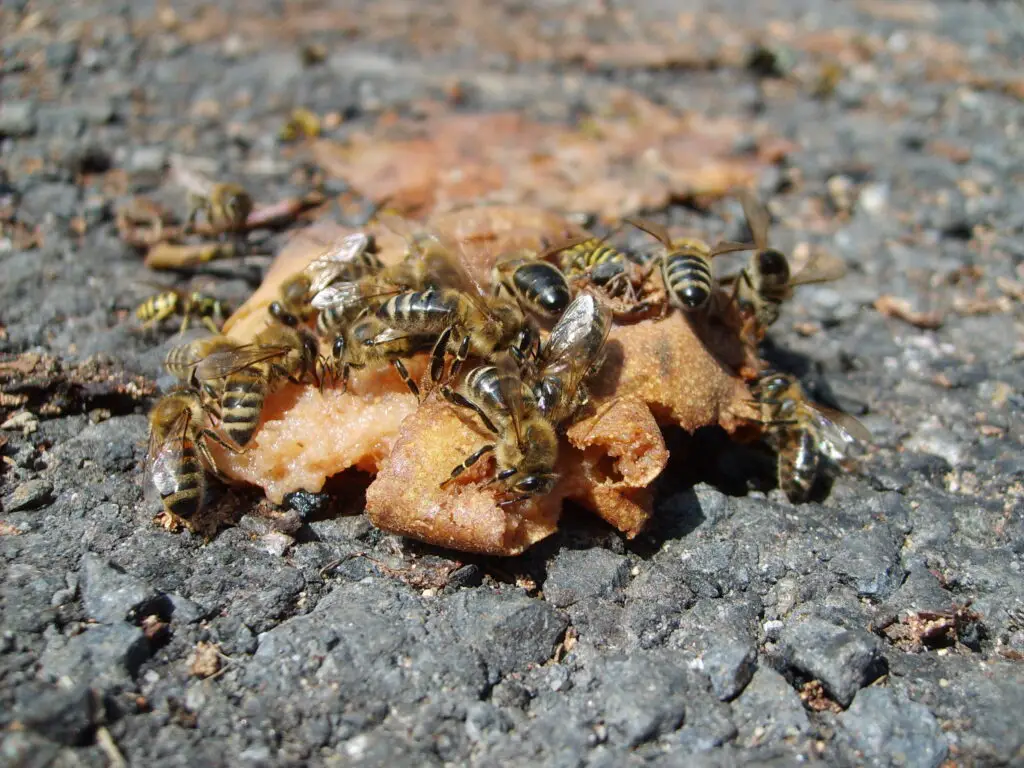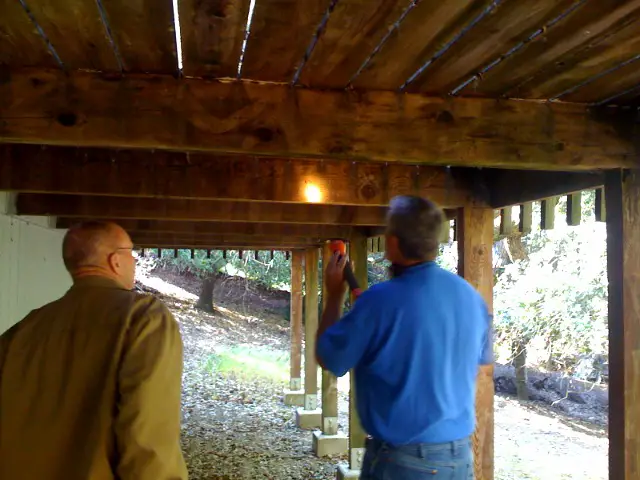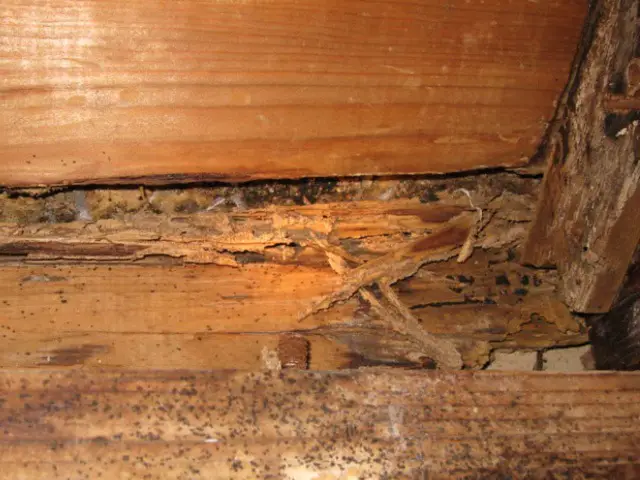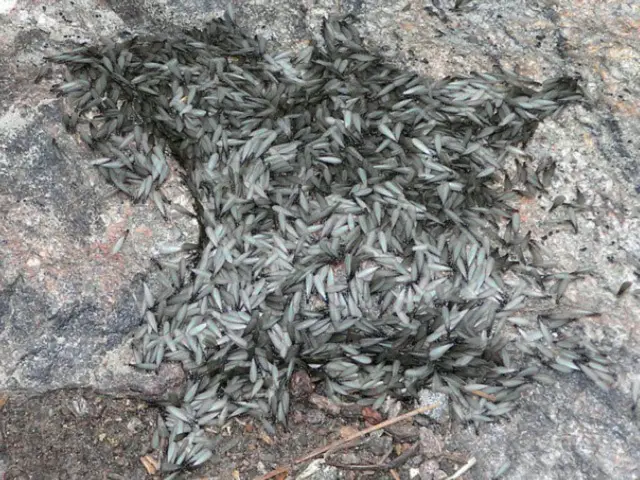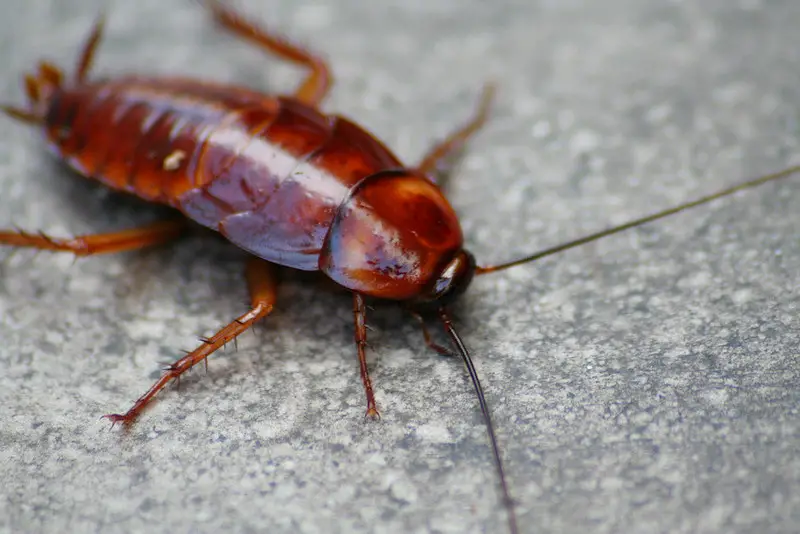Before attempting to answer why ground bees are in your yard, let us first understand the attributes and behavior of ground bees. This is important because it will more than likely answer why there might be ground bees in the yard. For example, some people find the ground bee’s burrow unattractive, but this type of bee can be the gardener’s friend. In addition, ground nester bees actively forage in search of pollen and nectar.
Digger bees, mining bees, and sweat bees all fall into the ground bee category. These insects are beneficial because they fulfill the much-needed role of pollination. If you judge by the number of little caves in the yard, you might estimate their population much larger in number than it is.
Ground bees are solitary bees. Each female bee digs her own burrow to raise their young in the ground. Then, they congregate and build multiple nests in any suitable area for nest building and burrowing. Male ground bees fly over burrows dug in the ground in search of a mate.
Ground bees aren’t dangerous like some bee species. They aren’t aggressive, but the females can and will sting when threatened. They will sting you if they feel the need to defend themselves or their nests. The male is not equipped with a stinger, so there is no danger there at all.
Don’t confuse the ground bee with the very aggressive, stinging yellow jacket. The yellow jacket is much larger than a ground bee. You can easily recognize a yellow jacket by its bright yellow striped body. The yellow part is much brighter, and the stripe is more noticeable than the ground bee.
Sand, loose soil is the preferred condition for ground bee burrowing. They are unlikely to nest in damp conditions. Keep in mind that the burrows are only in the ground for a relatively short time. After the mating season, the ground bees abandon their burrows. After a few weeks and a bit of rainfall, the little holes will fill back naturally.
If you feel that you must get rid of ground bees in the yard, you can discourage them and drive them away by soaking the soil in the area. A good covering of grass should also discourage ground bees from nesting in your backyard.
What to do if you have ground nesting bees in your yard?
Ground bees are not producing any honey. They are one of the several thousands of species of bees that nest in the ground. Hence the name ground bees. Some ground bees are solitary creatures. The females make their own nests on sandy, south-facing slopes. If your backyard has these features, don’t be surprised to find ground bee nests.
Are ground bees harmful?
Most bees aren’t dangerous. Even though ground bees are not aggressive, the females can sting you. Ground bees will not attack you unless you try to mess with them.
How to get rid of ground bees?
Because they are important pollinators, we don’t consider them pests. Avoid the use of chemicals to get rid of ground bees. Pesticides can be harmful for people and animals. A simple way to get rid of bees is to use water over their nests. When you pour water over their area, you will encourage them to find another area to nest. Because they aren’t pests consider leaving them alone in your yard.
To support ground bees, use plant species they use for nesting or as building materials (see Appendices E and F to Manufacturing Standards) or sometimes also use flower petals to create art-like nests. Bees cover their nests with things like compacted soil, pieces of cut leaves, and chewed flower petals. Football- or basketball-sized paper nests in underground cavities are usually suspended from overlapping plant roots, trunks or landscape beams.
For the most part, these ground nesting bees are solitary creatures that live alone, although many nests may be located in the same area as shown below, often prefer sunny, open areas with thin soil cover or bare sandy soil and are common in parks and home lawns. Most bee species are solitary insects that do not live in beehives or colonies, which means that each mother bee provides its own nest, and about 70% of the native bees live in the ground.
Unlike yellow vests, ground bees are solitary insects that dig their nests, although you can find more burrows in the immediate vicinity. However, female bees sting and species like yellow vests live in colonies and are harmful if they live too close to gardening and your children which may require killing them. As solitary nesting bees these terrestrial bees do not need a large colony of adult relatives to protect and end up quite gentle and almost sting free.
Do not turn the soil in the area as the bees need stable soil for their nests (young bees live up to eleven months of the year underground). It is important to protect terrestrial nesting bees from contaminated soils, which especially affect species such as pumpkin bees (Peponapis pruinosa) which nest at the base of cultivated plants and as the name suggests, are the main pollinators of gourds and gourds.
In agriculture, the common practice of planting insecticide-coated seeds can also lead to potentially dangerous levels of pollution for bees that nest in and around fields. Evidence now suggests that soil contamination can also affect many beneficial insects that live in soil, including native bee species.
Mulching your garden surface or thickening your lawn with the right fertilizer, watering and planting are effective ways to encourage ground-nesting bee species to find different nesting sites. Flooding burrows with running water is a simple and inexpensive method of killing ground bees by drowning them or forcing them to leave their nesting areas. Usually there is enough water in the nest area for bees to start looking for another nesting place.
Then you can mow, play and picnic as usual near the bees, but if there are many nests in the area, you can avoid the area for a month or two while the bees are nesting. Once the bees realize that they cannot return to their nest, they will most likely hide and find a new place to dig, leaving small piles of earth with a large hole in the center.
Each bee digs its own nest, a small tunnel in the ground that looks like a bunker, looks like an anthill. Unlike bees that live in shared hives, bees that nest on the ground live alone, which means that each female bee creates her own nest to lay eggs. On nesting sites in early spring, mainly males look for females for mating – males cannot sting.
The most common bees and wasps that nest on the ground include bumblebees (giant”), sweat bees, burrowing bees, leaf-cutting bees, burrowing wasps and killer cicadas. Ground-nesting bees and wasps may sound alarming to humans but are actually “good insects” that are busy with their jobs as pollinators or serve as useful predators in pest control.
This is true for some bees, but because there are many different types of rodents: large and small, species that live on trees and underground, species that like to build nests, and other species that just want to be alone: approximately There are 20,000 species of bees on earth, and they are all slightly different. In fact, 70% of bees in the United States build nests underground.
If the bees do not build nests in groups—many bees of the same species build nests next to each other—it will be difficult to find the entrance to the nests on the ground. When looking for nesting sites, some bees may be very creative. You can see that the most common bees that swim like hairy bumblebees prefer to build nests in cavities or dig deep to lay eggs.
Also solitary insects, gound bees burrow into dry soil to lay offspring. Females can and will sting, but only rarely unless provoked, and do not need to protect their nests.
Most of the bees that nest on the ground are solitary creatures, although you may find several nesting females in the same area in which case you will have to repeat this step. With the exception of the yellow jackets, the majority of bees and wasps that nest on the ground live alone, which means that only one female works and lives in each underground nest; they do not build hives; however, several females can nest in the same area.
Leaf-cutter bees have a wide variety of nesting habits, including nesting in underground burrows, hollow plant stems, wood and rock crevices. Description ground bees are composed mainly of solitary species that create burrows in the ground or tunnels in wood and can range from 1/2 to 3/4 inches in length.
